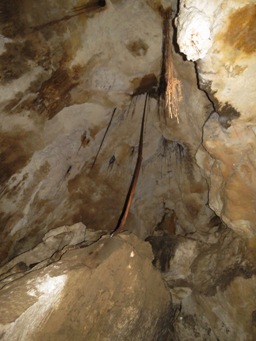Australia So Much to See


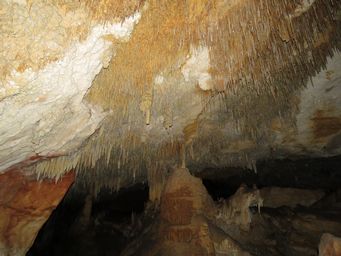
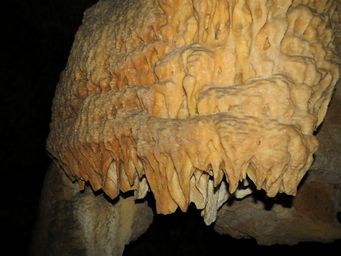
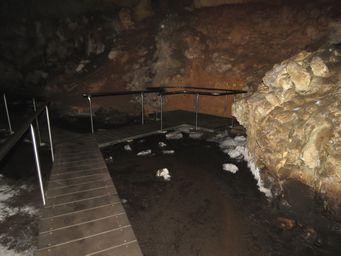
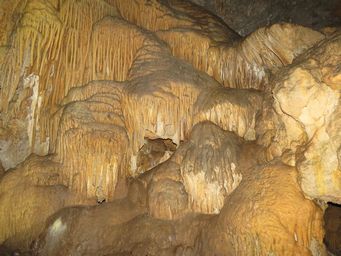
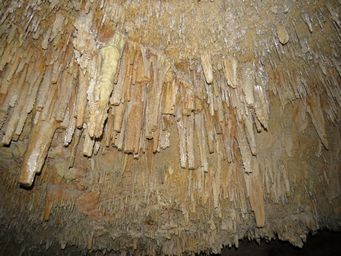
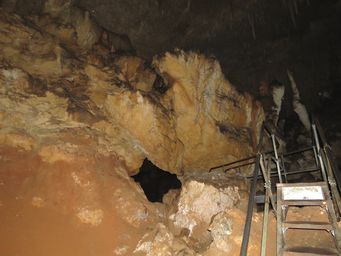
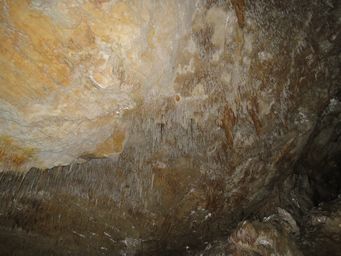
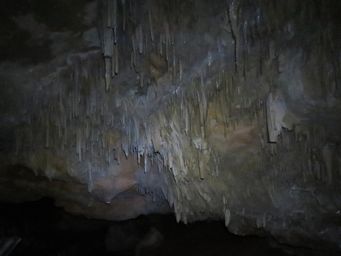
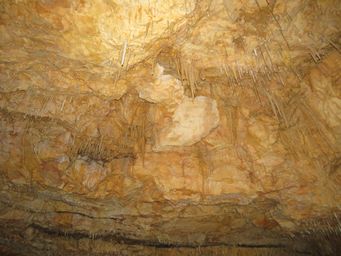
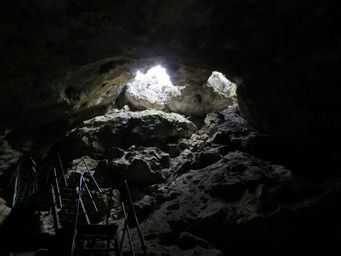
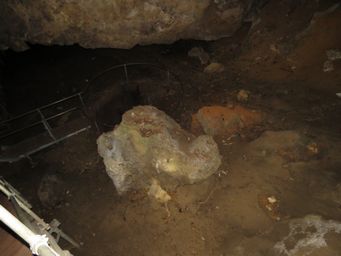
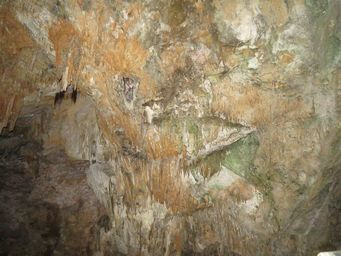
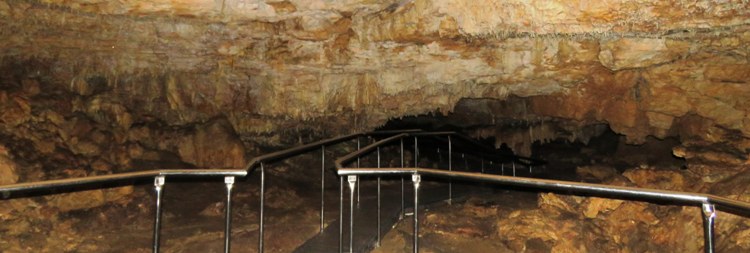
For a different cave experience, we visited Calgardup Cave, where tours are self guided so you can take you time, and with no artificial
lighting it is better for photography. The small cave has two sections each about 150 metres long, with well made stairs and
platforms where you can descent to 27 metres. Helmets with lamps and torches are provided, as well as an ultraviolet light torch
for casting a different appearance on the cave features.
This is a wet cave and as you decend you will feel the
moist air, and the stairs and hand rails are wet. The seasonal lake was almost dry, but a small stream could be seen flowing.
Tree roots dangle down into the cave.
We took the right side cave first, to find sparkling crystal stalactites and flowstones.
To the left, there are more colours but they lack to sparkle of the crystal formations. The walk culminates after a 12 metre very low section that you must bend for and it is recommended to use the low handrails for support. You will soon learn why you are wearing a helmet as it is easy to bump your head on the tunnel roof. Seating is provided at the end of this section. See photo at top of the page where the boardwalk commences this twelve metre passageway.
Abseiling was used to access a number of these caves by cave enthusiasts, when they were not open to the public.
